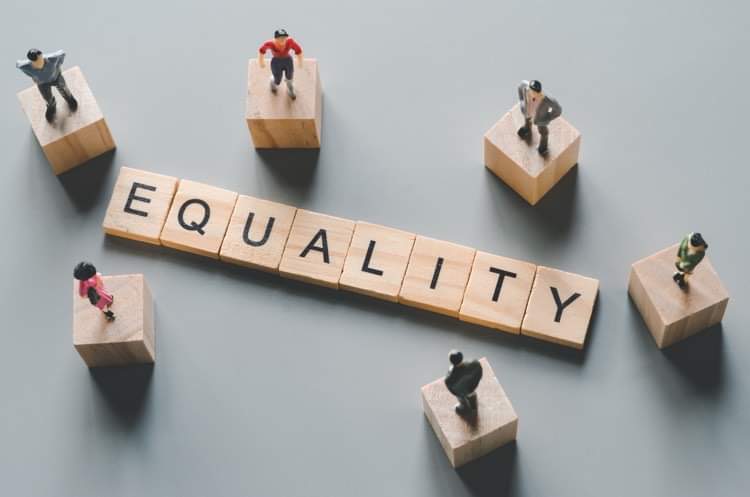Communication, like technology, evolves through time with the society. The best communication can promote understanding, build and maintain relationships, reflects culture, and affects socialization in a positive manner. The worst can do the opposite – it can spread discord, fake information, and even foster discrimination.
In a recent Manila Times article entitled, ‘Babae kasi’: Insights on why women are from Mars too, the author wrote that gender stereotypes remain prevalent. Gender inclusivity, in the ways of speaking and writing, should not discriminate against a particular sex, social gender, or gender identity, and does not perpetuate gender stereotypes.

Examples of conscious communication
Under the Civil Service Commission Memorandum Circular No. 12, Series of 2005 entitled “Use of Non-sexist Language in all Official Documents, Communications and Issuances,” here are some suggestions on how we can use inclusive language in the workplace:
- Eliminate the generic use of HE, HIS, HIM, SHE, or HER, unless the antecedent is obviously male or female
By using plural nouns
Rewording, if necessary
Substituting articles (a, an, the) for his; using who instead of he
Using One, We or You
Using the passive voice
Traditional: The lawyer uses his brief to guide him.
Suggested: The lawyers use their briefs to guide them.
Traditional: The architect uses his blueprint to guide him.
Suggested: The architect uses the blueprint as a guide.
Traditional: The writer should know his readers well.
Suggested: The writer should know the readers well.
Traditional: The manager must submit his proposal today.
Suggested: The proposal must be submitted by the manager today.
- Eliminate the generic use of Man, instead use People, Person(s), Human(s), Human Being(s), Humankind, Humanity, The Human Race
Traditional: ordinary man, mankind, the brotherhood of man
Suggested: ordinary people, humanity, the human family
- Eliminate sexism in symbolic representations of gender in words, sentences, and text by:
Taking the context of the word, analyzing its meaning, and eliminating sexism in the concept
Traditional: feelings of brotherhood, feelings of fraternity
Suggested: feelings of kinship, solidarity
Traditional: the founding father
Suggested: the founders, the founding leaders
Traditional: the Father of relativity theory
Suggested: the founder of relativity theory, the initiator of relativity theory
Finding precise words to delineate the thing itself from supposedly sex-linked characteristics:
Traditional: Titanic was a great ship, but she rests at the bottom of the sea.
Suggested: Titanic was a great ship, but it now rests at the bottom of the sea.
Traditional: “In all things of Mother Nature, there is something of the marvelous…”
Suggested: “In all things of nature, there is something of the marvelous…”
Traditional: You can’t stop Father Time.
Suggested: You can’t stop time.
- Eliminate Sexual Stereotyping of Roles
Using the same term for both genders when it comes to profession or employment
Using gender fair terms in lexical terms
Treating men and women in a parallel manner
Avoiding language that reinforces stereotyping images
Avoiding language that catches attention to the sex role of men and women
Traditional: Salesman, Stewardess
Suggested: Sales agent, Flight attendant
Traditional: Sportsmanship
Suggested: Highest ideals of fair play
Traditional: I now pronounce you man and wife.
Suggested: I now pronounce you husband and wife.
Traditional: a man’s job, the director’s girl Friday
Suggested: a big job, the director’s assistant
Traditional: working mothers, spinsters or old maids
Suggested: wage-earning mothers, unmarried women
Traditional: busboys, chauvinist pigs
Suggested: waiter’s assistants, male chauvinists
- Eliminate sexism when addressing persons formally by:
Using Ms. instead of Mrs.
Using a married woman’s first name instead of her husband’s
Using the corresponding titles for females
Using the title of the job or group in letters to unknown persons
Traditional: Mrs. Dela Cruz
Suggested: Ms. dela Cruz
Traditional: Mrs. Juan dela Cruz
Suggested: Ms. Maria Santos-dela Cruz
Traditional: Dra. Concepcion Reyes
Suggested: Dr. Concepcion Reyes
Traditional: Dear Sir
Suggested: Dear Editor, Dear Credit Manager, Dear Colleagues
Promoting gender-fair language at the workplace and adapting it not only in our cubicle but taking it in our respective homes, not only promotes inclusivity, but a greater understanding and awareness of our community. It’s the first step towards sparking the change we wish to see in the world.


